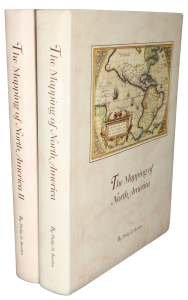Rare Maps and Prints
- World & Celestial
- North America
- West Indies, South & Central America
- British Isles
- British Isles
- English counties
- Large-scale
- Bedfordshire
- Berkshire
- Buckinghamshire
- Cambridgeshire
- Cheshire
- Cornwall
- Cumberland
- Derbyshire
- Devon
- Dorset
- Durham
- Essex
- Gloucestershire
- Hampshire
- Herefordshire
- Hertfordshire
- Huntingdonshire
- Islands
- Kent
- Lancashire
- Leicestershire
- Lincolnshire
- Middlesex
- Norfolk
- Northamptonshire
- Northumberland
- Nottinghamshire
- Oxfordshire
- Rutland
- Shropshire
- Somerset
- Staffordshire
- Suffolk
- Surrey
- Sussex
- Warwickshire
- Westmoreland
- Wiltshire
- Worcestershire
- Yorkshire
- Wales
- Scotland
- Ireland
- Western Europe
- Eastern Europe
- Middle East
- Africa
- Asia
- Australasia & Pacific
- Decorative Prints
- Title Pages
Mr. Philip D. Burden
P.O. Box 863,
Chalfont St. Giles, Bucks HP6 9HD,
UNITED KINGDOM
Tel: +44 (0) 1494 76 33 13
Email: enquiries@caburden.com
James Pigot (1769-1843) was born in Macclesfield and is first recorded in 1794 as an engraver and printer in Manchester. He engraved the map of Manchester for R. & W. Dean’s ‘Manchester Directory’ of 1804. In 1811 he began his own business but continued to issue the ‘Manchester Directory’ every two years in partnership with Dean. Moving to London, he opened premises at 24 Basing Lane and began publishing directories of the whole country. At this point he was trading as Pigot & Co. in partnership with the bookseller Charles Elkins of London. The partnership’s first directory was the ‘London and Provincial New Directory’ for 1822-23. The third edition of 1826-27 was according to the title ’embellished with a new series of Elegant Maps …’ however, it only contained those of the six home counties. Three parts were issued covering the whole country. An advert in 1829 indicated that the full series of maps were available bound up separately in an atlas. The is an example of the first dated edition, October 1830.
The maps are believed to be derived from the folio maps of John Cary published in 1809. They are the first engraved on steel and each contains attractive vignette scenes of the county. Steel is a much harder metal than copper which enabled greater detail to be recorded on the map. It was also feasible to print in greater numbers without showing signs of wear. Beresiner (1983) pp. 177-80; Carroll (1996) 88; Chubb (1927) 427; Darlington & Howgego (1964) no. 341.(3); Smith (1982) pp. 187-9; Worms & Baynton-Williams (2011).
The maps are believed to be derived from the folio maps of John Cary published in 1809. They are the first engraved on steel and each contains attractive vignette scenes of the county. Steel is a much harder metal than copper which enabled greater detail to be recorded on the map. It was also feasible to print in greater numbers without showing signs of wear. Beresiner (1983) pp. 177-80; Carroll (1996) 88; Chubb (1927) 427; Darlington & Howgego (1964) no. 341.(3); Smith (1982) pp. 187-9; Worms & Baynton-Williams (2011).
PIGOT, James
Pigot & Cos. British Atlas. Of The Counties of England, with A Map of England and Wales, and a Circular One of the Country Round London
J. Pigot & Co. Basing Lane, London, and Fountain-Street, Manchester, London, 1830
Large quarto (415 x 300 mm.), modern half calf by Dunn & Wilson, marbled paper boards, blind ruled, publisher’s paper title label affixed to upper board, spine with blind ruled compartments, gilt title, later endpapers. With typographic title page, Address with Contents, double page ‘Reciprocal Distance Table’ with tables of routes on the recto and verso, with 41 steel engraved maps including a large folding map of England & Wales dated 1830, Yorkshire and the London plate also folding, all in early outline and wash colour, each backed in fine cloth, each with a leaf of descriptive text, in good condition.
Stock number: 10270
SOLD








